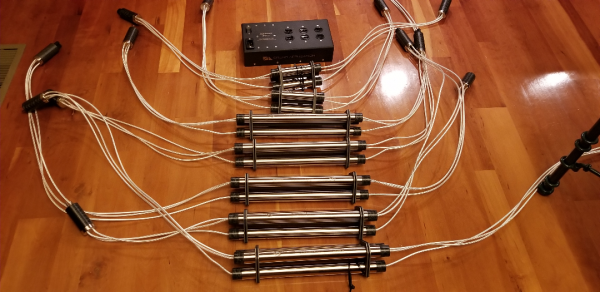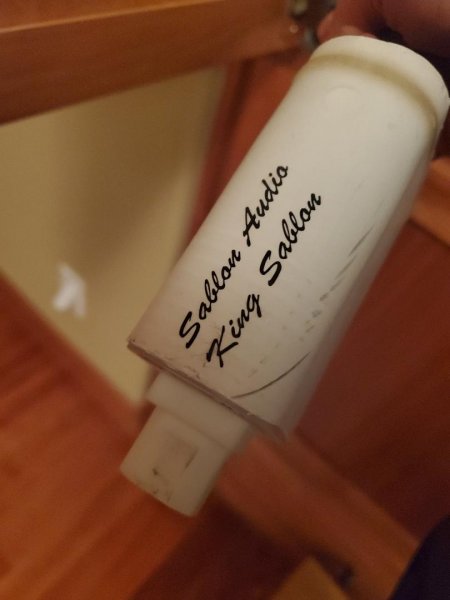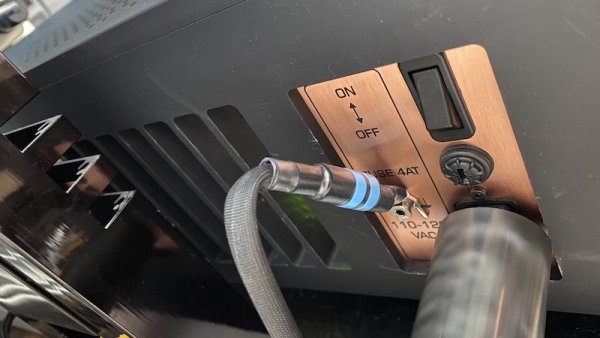SGM Extreme - 6 week experience: Power (Part 3)
Power cords
Power cords are controversial. Some people don't believe that they make a difference and others are so in love with their power cord that they get offended if someone suggests that a better power cord exists. Obviously, I have not had the opportunity to audition every cord in existence and so once again, YMMV.
For those that believe power cords make a difference, like many of you, I have had the opportunity to try many. Some cords are made for digital components as they incorporate special HF filters, some incorporate liquid or air dielectrics, some are designed to emphasize a specific tonal quality such as the warmth of a human voice, some specialize in treble purity, and some are expressly designed for high power amplifiers or as feeder cords for line conditioners. It is rare that one power cord is best suited for every application and for every taste.
My bias is toward clarity, resolution, and purity of tone. I generally don't seek any emphasis in the bass, mids, or treble but if forced to choose, I will accept a touch of warmth over brightness. I struggle with bright things. I also crave immediacy and liveliness. If a power cord moves me from the balcony to the front row, it has my attention.
Over the years, I have amassed a collection of power cords from High Fidelity Cables.

They are based on Rick Schultz's patented magnetic conduction technology that supposedly concentrates current toward the center of the conductor and away from the periphery eliminating HF smearing caused by the dielectric. As you go up the line from the original entry level CT-1 to the Pro Series, the strength of magnetism goes up resulting in the smoothest, purest, clearest treble I have yet heart. The resolution of this cable is extremely high and transients are slippery fast. The Pro Series easily outclasses a Nordost Odin 2 and these cords excel with source components. If there is a downside to the Pro Series, they are very expensive, very industrial looking, and also very heavy. The biggest downside is that these are 12awg cords and are not ideally suited for power hungry amplifiers although this is no different than other high end cords like a Nordost Odin 2 which is 14awg.
When my Extreme arrived, I had a Pro Series power cord ready and waiting for it. Prior to using the HFC Pro, like I said, I first powered the Extreme with an inexpensive 14awg Transparent power cord before moving to the Pro Series. The improvement in speed and resolution with the Pro was immediately apparent and I thought all was good.
Shortly after receiving my Extreme, I had approached Mark at
@Sablon Audio about auditioning his latest USB cable. While I wasn't really interested in auditioning anything else, he offered to also send me one of his power cords (a Sablon Prince with a Bocchino IEC) and I agreed. This cord has been around the block a few times and is showing wear but the cord is well broken in and here is a photo of this giant Bocchino IEC that this 6awg is terminated with:

Along with the Sound Application TT-7 line conditioner, this power cord is the biggest difference maker I have heard with the Extreme. What I thought was already excellent dynamics with the HFC Pro Series was lapped many times over with this Sablon Prince. It was similar to comparing the Extreme against a low power music server, there's no comparison. Not just dynamics but also sheer authority and grip. Thinking this was purely about wire gauge, I then directly compared the Sablon Prince against another 6awg cord, my Shunyata Sigma NR, and the Sablon was still much more dynamic. I'm not sure what's in this Bocchino connector but this cord behaves like a cord much larger than 6awg. But it's not just about dynamics and control. Where the Sigma NR sounds soft and recessed, the Sablon sounds livelier and with greater and more vibrant and natural tonal color. While the Sablon does not have the treble purity and ultimate resolution of the HFC Pro, its treble qualities are excellent with good air. Where the HFC Pro offers liquid smoothness, the Sablon offers natural texture and provides a nice balance with the Pro Series powering my DAC. There is perhaps one cord that is even better for the Extreme than the Sablon Prince and that is the Sablon King which has a Bocchino connector on both ends and 5awg of wire. Because of space constraints on my TT-7, I have purchased a Prince for my Extreme and a King as a feeder cord for my TT-7. Having just auditioned the Sablon with the TT-7 for Jim Weil last week, he now will be insisting to pair his line conditioner with this power cord at shows and the 2 are as suited for each other as the Sablon and the Extreme are. This thing is just otherworldly!





